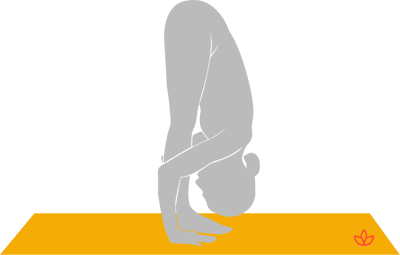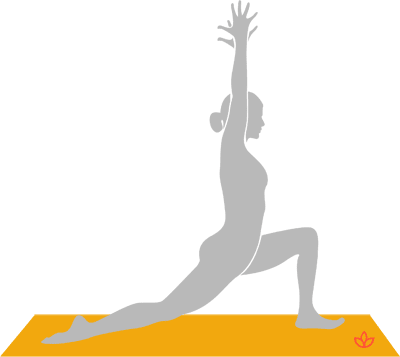Sections of this article appear in The Yoga Almanac: 52 Practices and Rituals to Stay Grounded Through the Astrological Seasons, March 2020, New Harbinger Publications. Reprinted with permission: New Harbinger Publications, Inc. © 2020 Lisette Cheresson & Andrea Rice.
After a global pandemic and a tumultuous political winter, the nascent blossoms, longer days, and warmer evenings have never felt so good. Spring is the season of planting seeds—both metaphorically and literally—of what we want to harvest come autumn. As we relish in those longer days and warmer evenings, we’re compelled to fling open the windows and clear out the cobwebs. Spring is an apt time to consider what a new beginning can mean, how we want to grow into it, and what we need to do to harness the power of this oft-frenetic fresh start.
The vernal equinox, on March 20 or 21 each year, corresponds with the start of Aries season. The equinox—when day and night are equal—is characterized as a spiritual rebirth, or new beginning. Just as the leaves are beginning to emerge and buds beginning their bloom, so too do we emerge from the introspective season of winter, armed with the lessons we learned by that long, dark, inward journey. It’s no surprise that this may feel more relevant than ever, given the actual physical hibernation of this past winter brought on by Covid lockdowns.
Rebirth + Awakening in Yogic Philosophy
The idea of rebirth is foundational to yogic philosophy. Reincarnation is, of course, an element of most religions in the Sanatana Dharma tradition, including Yoga, one of the six schools of Hinduism. Reincarnation is the awakening after death into the next life, circumscribed by karma. At its core, yoga itself is a practice of awakening. In Hinduism, Shakti is the primordial energy of the universe. This is associated with the divine feminine and the goddess Shakti or Devi, Lord Shiva’s omnipotent consort, but is not specific to gender.
When we practice yoga, we are aiming to awaken this Shakti energy, depicted as a coiled snake curled in our root (Muladhara) chakra, that travels through our Sushumna (central column, akin to the spinal cord), toward our crown (Sahasara) chakra. Patanjali’s eight limbs are directives to live a life in pursuit of this awakening as we continue along the cycle of birth, death, and rebirth (samsara)—until we reach reunification with the divine.
Practice asks us to examine the internal blockages that keep us from knowing ourselves. This requires not only determination, but joyful willingness. By accepting our physical limitations and celebrating our personal progress, we become active participants in our lives. Anchored in this foundation, we plant potent seeds from which satisfaction and freedom from our own inhibitions may grow. Just as the root systems of plants and forests are interconnected, so too are we. Yogic theory posits that there is no freedom from suffering—no awakening to ultimate truth—unless all beings are free.
What Does This Have to Do With Aries Season?
As the first sign of the zodiac symbolized by the Ram, Aries is considered the astrological baby, and is synonymous with fresh starts. The energy we feel and share during Aries season has the awe and wonder of childhood—a new journey is often circumscribed by feelings of excitement, healthy anxiety, and courage. Aries is a fire sign and ruled by the celestial warrior Mars. This ensures that our awakening is not akin to that of childhood, but a driving force that compels us forward into the new astrological year.
The Ram symbolizes this kind of pioneering leadership, that helps us encapsulate the forward-moving momentum of the season. Aries is associated with taking action, and, just like the blossoming trees, growing into the intentions we set during winter. Aries rules the head, face, and brain; a physical representation of the charging energy brought on by the Ram. Aries pushes hard and fast, rather than taking a measured approach. A warning this time of year to be cautious of burnout—give the seeds you plant ample time to take root.
Poses for Aries Season
Child’s Pose (Balasana)

photo by YogaPedia
Child’s Pose is symbolic for entering into the world in a vulnerable position. When we begin practice in this shape of being born, we nurture our connection to source. It is a pose we revisit throughout practice; a shape where we feel at home in our bodies. Child’s Pose may be practiced with knees together or wide, arms released by your sides. This relieves tension in the upper body to invite natural flexion in your thoracic spine. To support your knees and hips, place a blanket between your seat and the backs of your knees. Extended Child’s Pose is practiced with arms reaching overhead, facilitating shoulder extension. You can also stack your palms beneath with your elbows wide to support your head and neck.
Child’s Pose grounds us into our root (Muladhara) chakra, and activates the third eye (Ajna) chakra by pressing forehead to the ground.
Forward Fold (Uttanasana)

photo by YogaPedia
Translated from Sanskrit, Ut means intense; Tan is to stretch or lengthen. Logical Aries rules the brain, face, and head. A gentle inversion, Forward Fold places the head below the heart, increasing blood flow to the face. Forward Fold stretches the fascia of the back body, the connective tissue that encapsulates muscle and bone. The plantar fascia of the feet is also manipulated as the soles anchor into the ground. Practicing Forward Fold doesn’t mean you have to touch your toes or the floor or keep your legs perfectly straight. Keep a soft bend in the knees to stabilize and strengthen your hamstrings, which in turn supports a healthy and functional lower back and neutral spine.
Hinging at the hips engages the sacral (Svadhisthana) chakra, our center of passion and sexuality. Stabilizing the spine by engaging abdominal muscles activates the solar plexus (Manipura) chakra, the fiery center of Aries’ proactive vitality and the seat of digestive organs. Forward Folds are said to improve digestion and relieve menstrual cramps.
Arrow Lunge (Anjaneyasana variation)

photo by YogaPedia
This adapted version of a Crescent Lunge activates the muscles of the back body (posterior chain). The dynamic shape can be explored either with the back knee lowered and lifted, with the arms overhead or stretched behind, or with palms interlaced. Arrow Lunge strengthens the the glutes, hamstrings, lats, shoulder girdle, and the lower back. You can explore movement from a low lunge to Arrow with your arms overhead and back knee down, and then lift your back knee, hinge forward, and reach your arms back by your sides.
As you focus your “aim” by extending through your head, you retain a strong and neutral spine and facilitate an opening of the crown (Sahasrara) chakra. Consider what it is you’re powerfully aiming toward. Embody the qualities of the unstoppable Ram in bold pursuit of your dreams!
—
 Lisette is a writer, yoga teacher, and content director. She’s a member of the founding leadership team for Yoga Unify, a new yoga non-profit, and the co-author of The Yoga Almanac. Lisette completed her 200-hour training in Brooklyn and her Reiki attunement in India, and furthered her studies with Leslie Kaminoff of the Breathing Project, Tiffany Cruikshank, and Andrew Holecek. She’s also a Master Grief Coach and Death Doula, whose work is focused on integrating the tools of mindfulness and asana for grief healing and end-of-life anxiety. A filmmaker in a past life, Lisette has made videos with community leaders such as Dharma Mittra, Eddie Stern, and Eoin Finn. She lives with her husband and animals in the Hudson Valley, NY.
Lisette is a writer, yoga teacher, and content director. She’s a member of the founding leadership team for Yoga Unify, a new yoga non-profit, and the co-author of The Yoga Almanac. Lisette completed her 200-hour training in Brooklyn and her Reiki attunement in India, and furthered her studies with Leslie Kaminoff of the Breathing Project, Tiffany Cruikshank, and Andrew Holecek. She’s also a Master Grief Coach and Death Doula, whose work is focused on integrating the tools of mindfulness and asana for grief healing and end-of-life anxiety. A filmmaker in a past life, Lisette has made videos with community leaders such as Dharma Mittra, Eddie Stern, and Eoin Finn. She lives with her husband and animals in the Hudson Valley, NY.
